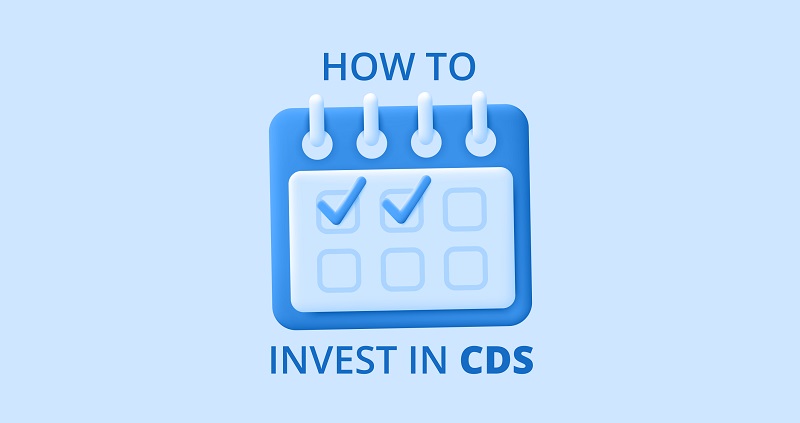Tax‑free investments: What you need to know
How to use tax-free and tax-advantaged investments to keep more of your money
Not all “tax-free” is equal: Some investments only shield income (like municipal bond interest), while true tax-free accounts (like Roth IRAs and HSAs) can eliminate taxes on both growth and withdrawals.
Tax efficiency drives long-term wealth: Finding the right mix of tax-free, tax-deferred, and tax-smart assets helps reduce the effect of taxes and boosts compounding.
Your best option depends on your goals: Your tax-free strategy should be tailored to meet your investment goals, liquidity needs, and risk tolerance.
What investments are tax-free?
When it comes to maximizing your wealth, taxes play an important role. Taxes can eat into your returns on decade-long investments, but by strategically choosing tax-smart accounts, assets, securities, and timing, you can help minimize tax liabilities, aiding long-term savings growth.
Tax-free investments can help you keep more of your returns in the long run, but what investments are actually tax-free? When referring to tax-free investments, this usually means either:
Investments where the income itself is not taxed, or
Investments held in accounts that allow your money to grow tax-free (also considered true tax-free investment vehicles)
So, tax-free investments are assets that generate income that is exempt from certain taxes. It is important to note that tax-free often applies only to the income (like interest or dividends), rather than the entire investment, and tax breaks may only apply at the federal level, meaning state or local tax can still apply.
Here are some common examples of tax-free and tax-efficient investments:
Municipal bonds (Munis)
Municipal bonds, also known as munis, are debt securities issued by states, cities, counties, and other governments to fund public projects such as schools, hospitals, roads, and more. When buying munis, you are essentially loaning money to the issuing authority to fund a public project, and in return you get interest paid for the duration of the bond and the return of the principal when the bond matures.
Interest income earned from munis is often free from federal taxes, and may sometimes also be exempt from state and local taxes. However, growth and capital gains may still be taxable. Essentially, the interest income is tax-exempt, but capital gains are still taxable.
Qualified small business stock (QSBS)
Qualified small business stock (QSBS) is a type of share issued by a C corporation with gross assets not exceeding $50 million when the stock is issued. If you invest early in a QSBS and hold your shares for a minimum of five years, you can potentially exclude up to 100% of your capital gains from federal taxes when you sell them. This is capped up to the greater of $10 million in gains or 10x the amount of your original investment.
However, these regulations may vary by state and may still be subject to state and local tax laws.
Indexed universal life insurance
Indexed universal life insurance, or IUL, is a type of permanent life insurance that combines death benefits with a tax-advantaged way to build cash value. Unlike term life insurance, life policies provide permanent coverage as long as premiums are paid. It can also provide cash value growth, as part of your premium goes into a cash value account, earning interest based on the performance of the stock market.
This cash value growth can be tax-deferred, similar to retirement accounts. It also allows policyholders to access cash value through loans or withdrawals (which may be tax-free). Death benefits paid out to beneficiaries are generally free of income tax.
Be sure to watch out for modified endowment contract (MEC) rules and lapse risk, as both can make withdrawals or loans taxable.
Essentially, IULs can help you grow money tax-efficiently while also providing insurance protection. While it may help minimize taxes for some, it is not often the first choice for beginner investors due to its high fees and complexity.
True tax‑free investment vehicles
True tax-free investment vehicles are account structures, rather than individual assets, that allow your money to grow and be withdrawn tax-free under certain conditions. These vehicles provide you with true long-term tax exemption on investment growth, instead of just tax-free income from a specific security. True tax-free investment vehicles often have stricter contribution limits and withdrawal rules to keep your earnings tax-free.
These tax-free investments are often used for building long-term, compounding wealth tax-free.
Some examples of true tax-free investment options include:
Roth IRAs & Roth 401(k)s
Roth IRAs and Roth 401(k)s are retirement accounts where contributions are made using after-tax dollars, allowing your earnings to grow tax-free. Qualified withdrawals made in retirement are tax-free, meaning you get to keep all of your earnings, given you follow certain rules. Roth IRAs have no lifetime RMDs, while Roth 401(k)s also have no RMDs as of 2024, allowing your contributions to continue to grow tax-free.
These options can be beneficial for long-term, tax-free retirement savings, but it is also important to consider the pros and cons of each account to see which one would best suit your needs. For example, Roth IRAs are not tied to your employer and offer more flexibility with withdrawals, but they do have stricter requirements on contribution and income limits.
On the other hand, Roth 401(k)s allow for higher annual contributions and include employer contribution matches but have stricter early withdrawal rules and are tied to your employer. Regardless of which account type you choose, it is also important to note that taxes may apply if you do not meet the requirements for qualified distributions.
Health savings accounts (HSAs)
If you are enrolled in a high-deductible health plan (HDHP), you can reduce your tax liabilities with a health savings account. HSAs are special savings and investment accounts you can use to pay for qualified medical expenses tax-free. They work by making pre-tax contributions (or tax-deductible ones) and then using that investment and its earnings to pay for medical expenses or further investing it for future use. This can help you build a medical nest egg and also benefit from tax advantages.
What makes HSAs unique is the three layers of tax benefits they offer, including:
Tax-deductible contributions, or pre-tax, if made through payroll
Tax-free growth on interest, dividends, or investment gains
Tax-free withdrawals when used for qualified medical expenses
This hybrid health-retirement account is an extremely tax-efficient tool to have, especially due to the rarity of the triple-tax benefits (most accounts don’t offer all three benefits in one).
529 plans
A 529 plan is a state-sponsored investment plan used to save money for educational purposes. They offer tax-free growth on earnings and withdrawals used for qualified educational expenses. You can use it to save for educational expenses for yourself, your child or other family member, or even a family friend.
Most states offer at least one 529 plan, and you can contribute to any plan of your choice regardless of what state you are in. While your contributions won't qualify for federal tax deductions, state deduction benefits may vary.
Getting started on college (or other educational) savings early can help potentially reduce a large financial burden in the future. If you don’t have a 529 plan yet, you can also get started earning interest on your college savings with a high-yield savings account or certificate of deposit (CD). While these options don’t give you the same tax-free interest benefits as a 529 plan does, they can still help you jumpstart your college savings journey.
The Raisin marketplace gives you access to multiple high-yield savings products so you can choose as many as you like to best fit your needs. Compare competitive interest rates and start growing your savings today!
Other tax‑saving and tax‑efficient strategies
While there are only a limited amount of tax-exempt investments, you can consider other tax-efficient strategies that may help lower the tax cut in your portfolio. Here are two other strategies that could potentially help you mitigate tax liabilities:
Asset location & tax‑efficient funds
Asset location, or deciding which types of investments go in which type of account (e.g., taxable, tax-deferred, or tax-free), can help you minimize overall taxes. Assigning income-generating assets to tax-deferred accounts, for example, can help you keep more of your earnings.
You could also consider which investment funds have a low turnover (fewer taxable capital gains) and keep them in taxable accounts (e.g., index funds or ETFs). This could potentially help lower annual taxes, allowing compounding to work more effectively.
Asset location and tax-efficient funds can help investors:
Reduce annual tax liabilities
Maximize long-term, after-tax returns
Retain flexibility (e.g., taxable accounts remain liquid while retirement accounts grow tax-sheltered)
Tax‑loss harvesting
Tax-loss harvesting uses realized losses to offset taxable gains in brokerage accounts. By selling underperforming investments and realizing losses, you can offset capital gains on other investments and, in turn, reduce your tax burden.
Furthermore, the IRS allows you to deduct realized losses in your tax return up to $3,000 per year (or $1,500 if married filing separately), allowing excess losses to be carried forward to future tax years.1 This allows you to make up a portion of your losses.
How to choose the right tax‑free investment strategy
Choosing the right tax-saving investments can help you keep more of your portfolio earnings. The best strategy depends on your needs, meaning this may look different for every investor.
To build an efficient strategy, you may want to:
Determine your current situation: Assess your financial goals, investment horizon, risk tolerance, and tax situation. Decide what you are investing towards and how much risk you are willing to take.
Identify what accounts you are eligible for: Identify eligibility limits for Roth IRAs, HSA, and 529 plans, as well as rules and regulations for QSBS. Are you qualified to make contributions to these accounts? Are these investment options available in your state?
Consider trade-offs: You might want to consider how much liquidity, restrictions, qualified uses, or contribution limits you are willing to trade for potential growth.
Consider extra fees and benefits: Evaluate hidden account fees and consider potential state tax benefits (e.g., state tax deduction for 529s).
Once you have your primary investment objectives in place and an understanding of your financial situation, you will be able to tailor your investment plan to best fit your goals. You might also want to consider seeking professional advice from a financial advisor before making any big decisions.
Bottom line
Tax-free investing can be a powerful way to maximize wealth, but it requires understanding the difference between tax-exempt income, tax-advantaged accounts, and tax-efficient strategies. The right choice depends on your financial goals, timeline, and eligibility. As always, consider your personal tax situation (and seek professional guidance when needed) to make sure your portfolio is built to minimize taxes while still meeting your bigger financial goals.
If you're ready to get started building long-term wealth, Raisin is here to help. The Raisin marketplace gives you access to a variety of high-yield savings products to help you make the most of your savings. Explore account types, compare rates, and sign up today to start maximizing your savings potential!
FAQ about tax-free investments
Are Roth IRA withdrawals truly tax-free?
Roth IRA withdrawals are truly tax-free as long as you make qualified withdrawals on contributions or earnings (if you’re age 59½ or older and have met the 5-year holding rule).
What makes a municipal bond tax-free at the federal and state level?
Muni bond interest is generally exempt from federal income tax. If you buy bonds issued in your home state, the interest may also be exempt from state and local taxes. Capital gains, however, are still taxable.
Can I use HSA funds tax‑free after age 65 for non‑medical expenses?
At 65, HSA withdrawals for non-medical expenses are allowed without penalty, but they are taxed as ordinary income. Withdrawals for qualified medical expenses, however, remain entirely tax-free.
What are the limits and rules for using QSBS tax exclusion?
If you invest in QSBS and hold it for at least 5 years, you may exclude up to 100% of capital gains from federal taxes (which is capped at the greater of $10 million or 10x your original investment). However, state tax treatment may vary, so you might want to look into the rules for your specific state.
The above article is intended to provide generalized financial information designed to educate a broad segment of the public; it does not give personalized tax, investment, legal, or other business and professional advice. Before taking any action, you should always seek the assistance of a professional who knows your particular situation for advice on taxes, your investments, the law, or any other business and professional matters that affect you and/or your business.


